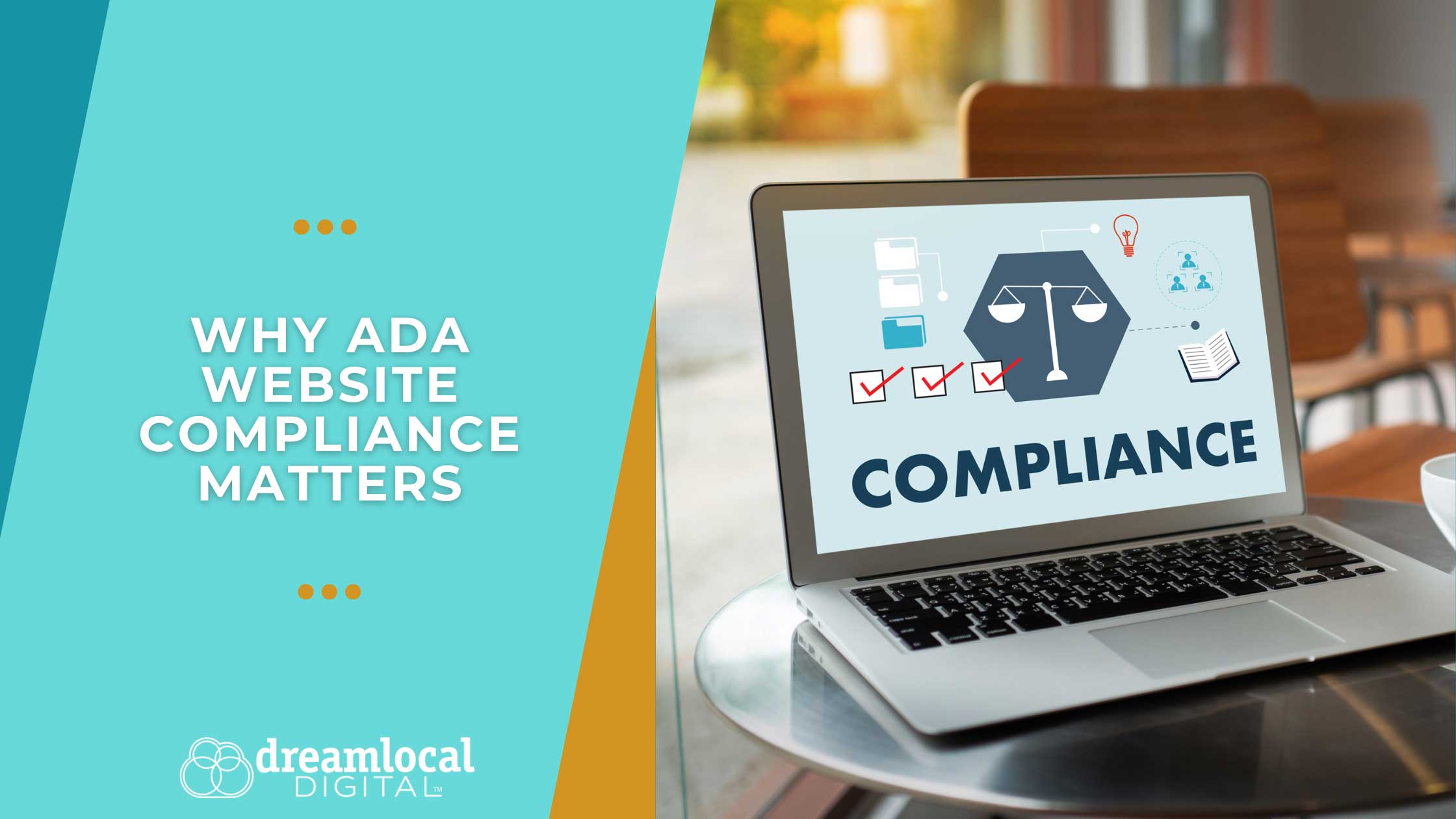Why ADA Website Compliance Matters for Inclusivity and Customer Reach

An ADA-compliant website ensures that all users, including those with disabilities, can easily navigate and interact with your content. This enhances brand loyalty among customers who value inclusivity and enables you to reach a wider audience.
According to the Centers for Disease Control and Prevention (CDC), 1 in 4 American adults live with a disability, meaning ADA compliance makes your website accessible to millions of potential customers. Accessible web design can foster better engagement and an enhanced user experience, providing a significant competitive advantage.
Let’s dive into ADA compliance and how you can ensure your business covers its bases.
Avoiding Legal Risks
ADA compliance is also a legal obligation. The Americans with Disabilities Act (ADA) mandates that businesses accommodate individuals with disabilities, including accessible website design. With web accessibility lawsuits rising, non-compliance could result in fines or costly settlements.
Ensuring that your website meets ADA standards shields your business from legal action and demonstrates your commitment to accessibility and inclusivity. For a deeper understanding of the legal background, you can review the ADA’s stipulations on the ADA National Network and find recent litigation summaries on the Department of Justice’s ADA website.
What ADA Compliance Entails in Website Development
Achieving ADA compliance involves incorporating specific standards to ensure accessibility for users with disabilities. Here are key requirements:
-
Text Alternatives for Visual Content: Providing descriptive text for images, videos and audio ensures that users with screen readers can understand your content.
-
Keyboard Navigation: Making all interactive elements, such as menus and forms, accessible via keyboard is crucial for users with limited mobility.
-
Readable Text and Contrast: Use of appropriate font sizes, colors and contrast aids users with visual impairments.
-
Accessible Forms: Clear instructions and labels for all fields help users complete forms with ease.
-
Adjustable Text Size and Spacing: Allowing users to modify text size and spacing enhances readability for those with visual impairments, including dyslexia.
Following these guidelines makes your website more accessible to people with disabilities, expanding your audience and improving user satisfaction. For a comprehensive set of guidelines, refer to the Web Content Accessibility Guidelines (WCAG) on W3C’s website.
Simplifying ADA Compliance
While implementing ADA-compliant features may seem complex, especially for small businesses, tools like UserWay offer an efficient solution.
UserWay and similar providers provides an AI-driven accessibility widget that adapts your website for ADA compliance with minimal effort. It includes features like:
-
Screen Reader Optimization: Automatically generates descriptions for images and multimedia, enhancing screen reader compatibility.
-
Keyboard Navigation Support: Ensures all elements are keyboard-navigable for users who rely on this feature.
-
Contrast and Text Adjustments: Enables on-page adjustments for color contrast, font size, and text spacing.
-
Form Labeling: Enhances forms with clear labels, ensuring usability.
-
Compliance Monitoring: Continuously audits your website to identify and address compliance issues as content evolves.
ADA Compliance as a Marketing Advantage
In today’s market, consumers appreciate brands that prioritize inclusivity and accessibility. ADA compliance mitigates legal risks and creates a positive brand image, fostering customer loyalty and generating referrals.
An accessible website indicates that your brand values all customers, which can ultimately lead to a competitive edge. Research suggests that accessible design benefits all users, not just those with disabilities, through enhanced user experience and retention.
Additional Benefits of ADA Compliance
Beyond accessibility and legal protection, ADA-compliant websites benefit all users by providing an improved user experience, enhanced SEO, and potentially faster page load times. Accessible websites are often better organized, making it easier for search engines to crawl and index content and improving visibility in search results.
This optimized structure enhances visitor engagement, increasing traffic, retention, and, ultimately, conversions. Creating an accessible digital space shows a brand’s commitment to inclusivity and is a testament to its values.
Need a website update? Dream Local Digital specializes in accessible, user-friendly website solutions. Contact us today to start building a website that welcomes all users and strengthens your brand’s reputation.
Newsletter Signup
Stay up to date on the latest digital marketing news, updates, and more. Sign up to receive our newsletter!




